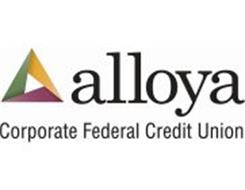Margo Giles, Senior Vice President of Payment Operations, Alloya Corporate FCU
Jim Schneck, Chief Strategy & Innovation Officer, Alloya Corporate FCU
Seemingly out of nowhere, some things take the world by storm and leave us  wondering how “salty” became an adjective for people and “tea” a synonym for “gossip.” If real-time payments are having the same effect, you’ve come to the right place.
wondering how “salty” became an adjective for people and “tea” a synonym for “gossip.” If real-time payments are having the same effect, you’ve come to the right place.
Defining Real-Time Payments
Over the last two years especially, there’s been a lot of talk about faster and real-time payments, and the changes they’re expected to prompt within the financial services industry. In that time, we’ve found that a railroad metaphor can help us more easily visualize how faster and real-time payments differ from legacy forms of payment.
Real-time payments are a type of faster payment using new rails, built from the ground up, to move transactions instantly. Just as locomotives have evolved over the centuries from being powered by coal and steam to diesel and electricity in order to improve efficiency and customer experience, so too have payments.
Furthermore, faster and real-time payments are not one and the same. Same day ACH transfers were the first form of faster payment to debut, taking up to several hours on a weekday. The next faster payment to come onto the scene, debit card push payments, take less than 30 minutes, with the average transfer occurring in 18 seconds! Just as ACH and cards run on their own unique networks, so do real-time payments. The first real-time payments network debuted on a new set of rails in 2017. Unlike faster payments, real-time payments move and settle funds instantaneously, 24 hours a day, 365 days per year (24×365). They are also irrevocable: once sent, they are final.
Why Real-Time Payments Matter
A Co-Op CU Growth Outlook (2023) found that credit union members have triple the number of financial relationships as most non-credit union members on average. Furthermore, predictions show that members are willing and likely to migrate their financial relationships to institutions that can provide the experience they want. A credit union’s payment offerings (or lack thereof) have the power to make or break the member relationship, particularly as other non-traditional institutions and fintechs unveil solutions to satisfy the evolving needs of consumers, businesses and merchants.
Understanding the Real-Time Networks
There are two major networks that can facilitate tried-and-true real-time payments.
- The Clearing House’s RTP® Network
- The Federal Reserve’s FedNow® Service
The two real-time networks are similar in that they both address the unique features that make a payment real-time (i.e., instant settlement, finality, and immediate funds availability). However, differences exist in areas such as transaction limits, funding requirements and fraud controls that need to be understood as part of the decisioning and implementation processes.
Attributes of Both Networks
- Immediate settlement between financial institutions
- Immediate funds availability
- 24×365 availability and processing
- Transactions must complete within seconds upon submission to the network
- Payments cannot be revoked, recalled, cancelled (they are irrevocable)
- Return of funds can be requested in the event of erroneous payments; there is no regulatory requirement to return the funds, it is up to the receiving financial institution to decide upon
- Both the sending and receiving financial institutions must be connected to the same real-time network to process a given transaction (there is no interoperability between the networks)
- Real-time fraud screening is not required by either network
- Unauthorized payments must be reported to the network
Comparison of Other Key Elements & Features of the Networks
|
|
RTP® |
FedNow® Service |
|
Offered By |
The Clearing House (TCH) |
The Federal Reserve |
|
Owned By |
Large banks |
U.S. Government |
|
Available For Use |
2017 |
July 2023 |
|
Settlement Account |
Joint TCH account at the Fed; respondents can settle in this account through their correspondent |
Individual master account at the Fed; respondents can settle in correspondent’s master account with proper approval |
|
Transaction Limits |
$1 million max; financial institutions can set lower limits |
$500,000 max for initial launch; $100,000 default setting; financial institutions can set lower limits |
|
Negative Lists |
No mechanism built into RTP® system flow, but checking a negative list could be incorporated elsewhere in the transaction flow |
Each participant can optionally maintain their own negative list on the FedNow platform |
Selecting a Real-Time Network
Connecting to a real-time network is a must in order to offer true real-time payment capabilities to your members. If you want your members to be able to send and receive real-time payments via both the RTP® and FedNow networks, then your credit union will need to be connected to both networks. This is because transactions cannot cross networks.
Ultimately, a credit union’s real-time network decisions will hinge on member expectations as well as operational and financial considerations. It’s up to you to determine what makes sense for your credit union and your members.
Envisioning Real-Time Payments in Real Life
Real-time payments are about more than simply speed and convenience; they have the power to change the way a credit union’s consumer and business members live their lives. Consumers, for example, may seek ways to pay bills at the last minute without being penalized. Gig workers could receive their paycheck for the same day’s work and immediately use those funds for necessities. Business members can optimize their cash flow and have greater confidence that funds received are good to use for purchasing supplies. A credit union’s payment offerings have the potential to fulfill each of these needs.
How Alloya Can Help
Alloya offers a full suite of products that credit unions can mix and match to meet their unique needs. Each offering can be used as a standalone solution or bundled with others.
Real-Time Payment Processing (FedNow® Service and/or RTP®)
- Enables the processing of Receive-Only or Send & Receive transactions over the FedNow and RTP® networks.
- Manages the connectivity to the networks and processes the payments within seconds.
- Includes integration to credit union core systems for immediate posting of payment activity
Real-Time Settlement (FedNow Service and/or RTP®)
- Ensures real-time settlement between financial institutions as each real-time transaction is processed.
- Allows for settlement with Alloya even if real-time processing is enabled with another vendor.
- Includes liquidity management services to ensure funds are always available for immediate settlement 24×365.
P2P Solution(s)
- Alloya is evaluating and piloting several P2P solutions to ensure high value at a lower cost.
- One or more solutions will be made available to members based on credit union feedback.
- Alloya anticipates the solution(s) will enable your credit union’s members to initiate payments to their friends and family on ACH, debit card, FedNow and RTP® rails.
Learn More
Visit www.alloyacorp.org/real-time-payments or connect with your Alloya representative to learn more.


